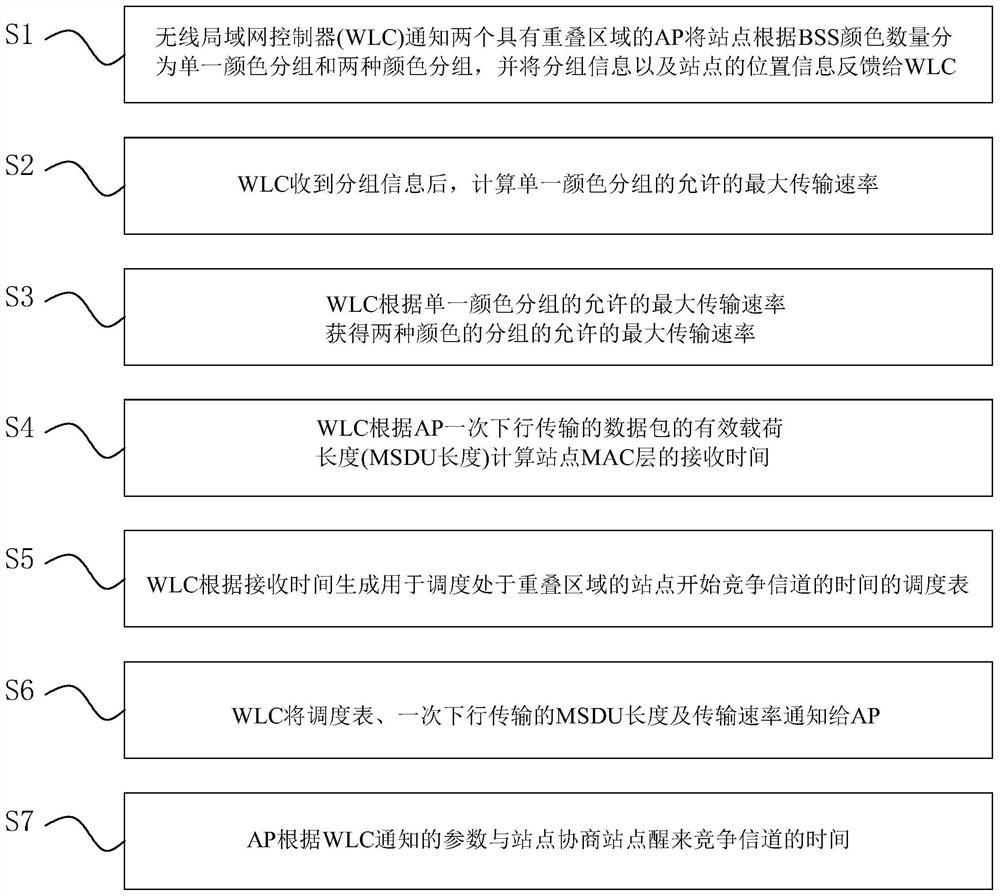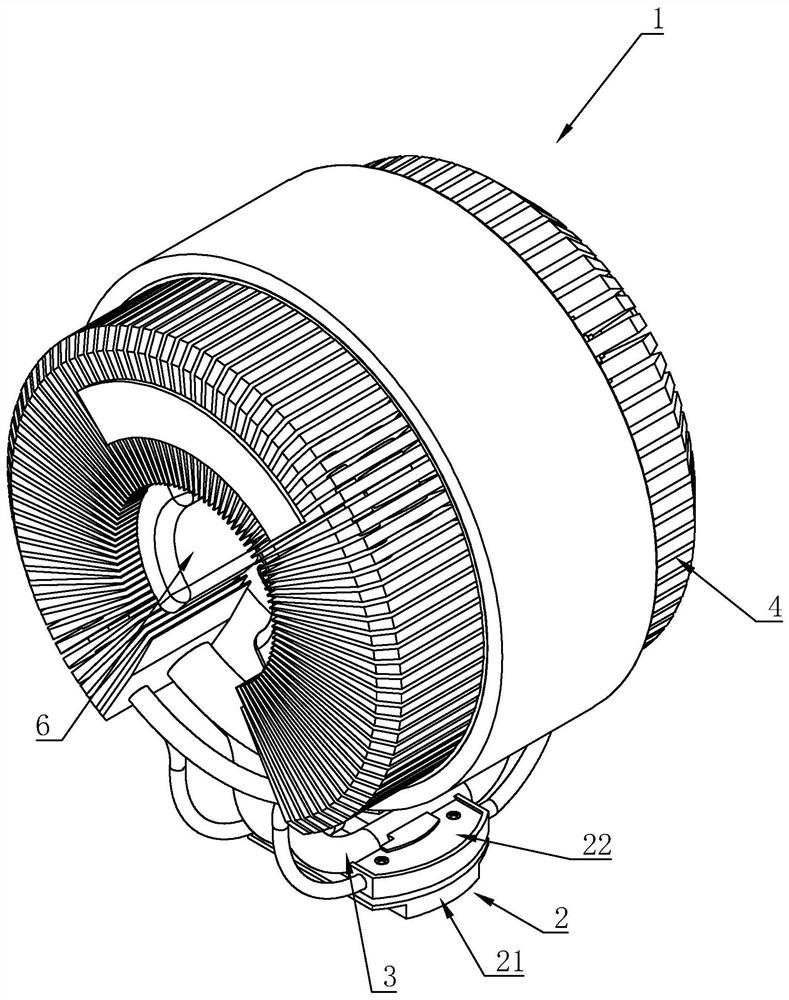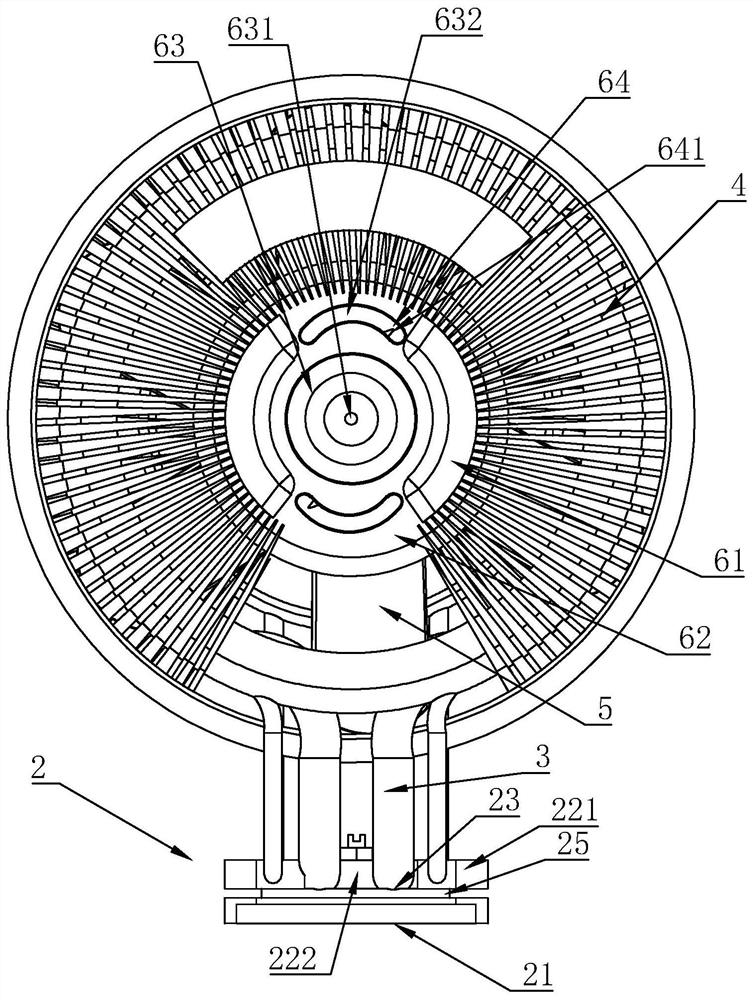Anti-interference coordination system applied to dense WLAN
A single, site-based technology, applied in the field of anti-jamming coordination systems, can solve problems such as changing site associations and sites with no APs to associate with
- Summary
- Abstract
- Description
- Claims
- Application Information
AI Technical Summary
Problems solved by technology
Method used
Image
Examples
Embodiment Construction
[0046] The present invention will be further described in detail below in conjunction with the embodiments given in the drawings.
[0047] Reference Figure 1-Figure 11 As shown, an anti-interference coordination method applied to dense WLAN in this embodiment includes
[0048] Step 1: The wireless local area network controller (WLC) informs two APs with overlapping areas to divide the sites into single color groups and two color groups according to the number of BSS colors, and feeds back the grouping information and the location information of the sites to the WLC;
[0049] Step 2: After receiving the packet information, WLC calculates the maximum allowable transmission rate of a single color packet;
[0050] Step 3: WLC obtains the allowable maximum transmission rate of two-color packets according to the allowable maximum transmission rate of a single color packet;
[0051] Step 4: WLC calculates the receiving time of the MAC layer of the station according to the payload length (MSD...
PUM
 Login to View More
Login to View More Abstract
Description
Claims
Application Information
 Login to View More
Login to View More - R&D
- Intellectual Property
- Life Sciences
- Materials
- Tech Scout
- Unparalleled Data Quality
- Higher Quality Content
- 60% Fewer Hallucinations
Browse by: Latest US Patents, China's latest patents, Technical Efficacy Thesaurus, Application Domain, Technology Topic, Popular Technical Reports.
© 2025 PatSnap. All rights reserved.Legal|Privacy policy|Modern Slavery Act Transparency Statement|Sitemap|About US| Contact US: help@patsnap.com



